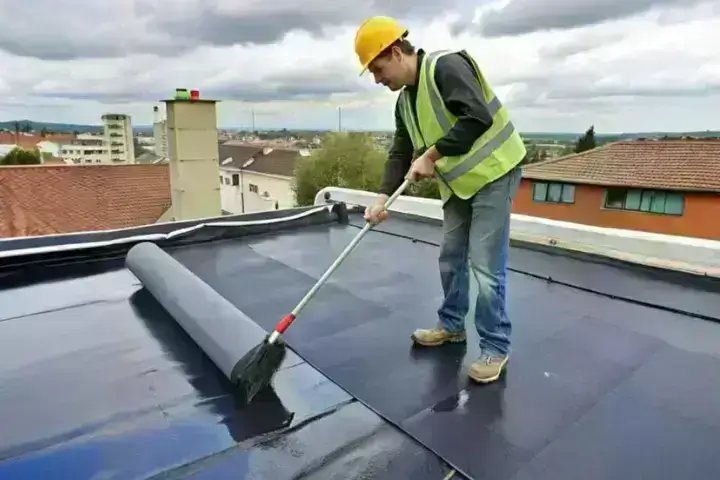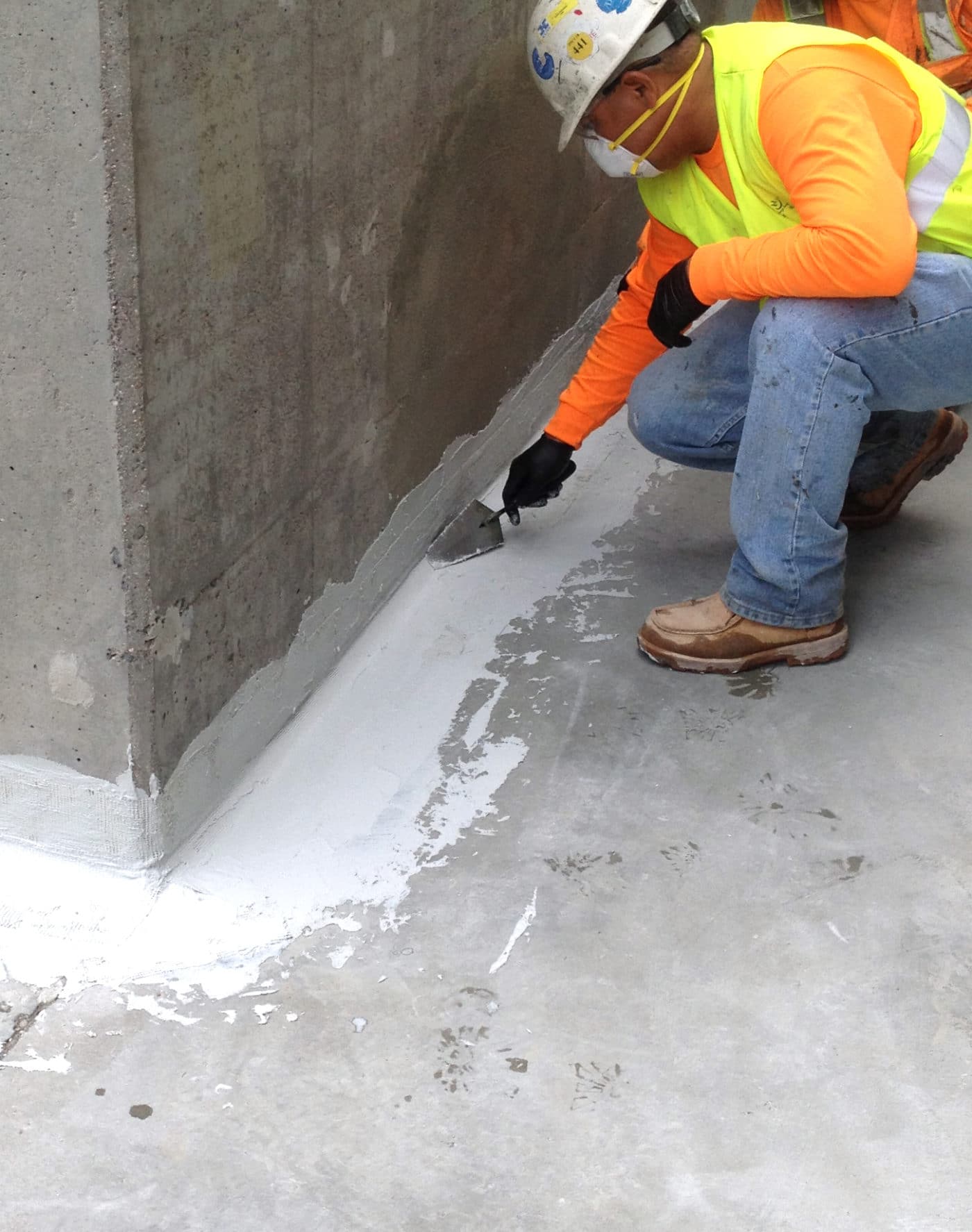How Waterproofing Works: A Thorough Appearance at Techniques and Technologies
Waterproofing is essential for shielding structures from moisture-related damages. It includes different methods and innovations that develop barriers versus water invasion. Traditional techniques, such as compacted clay, exist together with modern developments like liquid-applied membranes. Recognizing the nuances of these strategies is important for reliable application. However, the effectiveness of any type of waterproofing remedy hinges not just on the techniques utilized yet additionally on ongoing upkeep and inspection. What are the key aspects that affect long-term performance?
Recognizing the Basics of Waterproofing
Waterproofing is a vital process that secures frameworks from water intrusion, which can result in considerable damages over time. This method involves the application of different materials and techniques developed to produce a barrier versus dampness. The main goal is to protect against water from penetrating surfaces, which can cause wear and tear, mold and mildew development, and structural instability.Various aspects affect the selection of waterproofing approach, consisting of the kind of framework, its place, and ecological conditions. Comprehending the physics of water motion and the properties of different materials is important in picking a reliable waterproofing solution.Effective waterproofing not just safeguards structures yet likewise improves their long life and honesty. Typically, it is incorporated right into the layout stage of building to guarantee extensive security. As awareness of water-related issues expands, the relevance of comprehending waterproofing basics comes to be significantly clear to engineers, home builders, and homeowner alike.
Typical Waterproofing Methods
Typical waterproofing techniques have been made use of for centuries, counting on tried and true techniques and products to secure structures from water damages. One of the earliest techniques involves the use of clay, which, when compressed, develops an all-natural obstacle versus dampness. In addition, bitumen, a sticky, black product stemmed from petroleum, has been utilized for its water-resistant homes, often used to roofing systems and foundations.Another method includes the application of lime-based plasters, which provide a breathable layer that enables moisture to get away while preventing water access. Thatch roof covering, a standard method still seen in some cultures, supplies outstanding waterproofing as a result of its firmly loaded straw layers.Moreover, making use of rock and brick has been noticeable, as these materials are naturally resistant to water when properly set up. Overall, conventional waterproofing approaches emphasize the value of picking appropriate products and building and construction methods to improve durability against water invasion.
Modern Waterproofing Technologies
Advancements in modern-day waterproofing technologies have reinvented the means frameworks are shielded from water damage. Ingenious strategies such as liquid-applied membrane layers and advanced sealants have enhanced the effectiveness and adaptability of waterproofing remedies. These modern technologies allow for seamless application, decreasing the threat of leaks and making sure thorough coverage over complex surfaces.Moreover, the integration of smart technologies, such as moisture sensing units and automated monitoring systems, enables real-time assessment of waterproofing performance. This proactive strategy facilitates timely maintenance and reduces lasting fixing costs.Additionally, advancements in spray-applied coatings use fast application and exceptional bond, adapting to various substrates while giving robust protection. Techniques like polymer-modified systems further boost adaptability and toughness, making them appropriate for diverse settings. Generally, contemporary waterproofing technologies not just alleviate water invasion but likewise add to the longevity and sustainability of frameworks, marking a significant change in the market.
Products Utilized in Waterproofing
The effectiveness of waterproofing remedies heavily depends on the products utilized in their application. Numerous materials are used to produce obstacles against water access, each with special homes fit for different settings. Typically used materials consist of membranes, coatings, and sealants.Liquid-applied membrane layers, usually made from polyurethane or acrylic, develop a smooth barrier that adjusts to complex surfaces. Sheet membranes, typically built from rubber or thermoplastic, offer longevity and are suitable for bigger areas. Additionally, cementitious waterproofing products, made up of cementitious substances, supply superb bond and flexibility.Sealants made from silicone or polyurethane are essential for joints and joints, guaranteeing detailed protection. Furthermore, innovative materials, such as geo-composite membrane layers, integrate numerous features, enhancing efficiency. Generally, the option of waterproofing products is essential in achieving lasting and reliable water resistance, tailored to specific job demands and ecological problems.
Usual Applications of Waterproofing
Waterproofing plays a vital duty in various sectors, guaranteeing the durability and stability of frameworks. Typical applications include domestic options that secure homes, commercial facilities that safeguards services, and commercial setups that need durable defense versus dampness. Recognizing these applications highlights the relevance of waterproofing in keeping both safety and security and capability throughout various atmospheres.
Residential Waterproofing Solutions
Lots of house owners deal with challenges with wetness intrusion, making effective residential waterproofing remedies essential. Numerous techniques exist to address this problem, including exterior and interior waterproofing systems. Inside options typically include the application of sealants and coverings to cellar wall surfaces, which assist prevent water infiltration. Exterior approaches typically consist of the setup of drainage systems and water-proof membranes that divert water far from the foundation.Additionally, homeowners might take into consideration sump pumps to eliminate this website water accumulation and dehumidifiers to regulate humidity degrees. Proper grading and the use of seamless gutters likewise play an important duty in handling water circulation around the home. By carrying out these strategies, homeowners can substantially reduce the threat of water damage and mold and mildew growth, making certain a dry and secure living environment.

Business Framework Defense
Reliable waterproofing remedies play a critical duty in the defense of business infrastructure. French drain installation Omaha. These strategies are crucial for securing buildings, vehicle parking structures, and bridges from water damage, which can endanger architectural stability and result in costly fixings. Typical applications include the installment of membrane layers, coverings, and sealers that develop barriers against wetness infiltration. Locations such as cellars, roofing systems, and outside walls are commonly focused on to assure durability and resilience. In addition, waterproofing systems can improve power effectiveness by preventing water-related issues that might bring about mold development and deterioration. By executing robust waterproofing steps, homeowner can secure their investments and maintain functional effectiveness, inevitably adding to the total sustainability of industrial centers
Industrial Applications Introduction
While different markets encounter one-of-a-kind challenges, the requirement for trustworthy waterproofing solutions stays a continuous in commercial applications. Industries such as production, building, and energy often run into environments where moisture exposure can jeopardize architectural honesty and functional performance. In making centers, waterproofing is important for shielding equipment and materials from water damage. In construction, it safeguards foundations and basements versus groundwater seepage. The energy sector relies on waterproofing for the defense of devices in hydroelectric plants and overseas structures. Additionally, food handling markets use waterproofing to guarantee health and conformity with safety standards. On the whole, reliable waterproofing services are vital for enhancing durability, safety and security, and productivity throughout different industrial setups.
Maintenance and Longevity of Waterproofing Solutions
Waterproofing services are made to provide lasting security versus moisture intrusion, normal maintenance is crucial to ensure their performance and longevity. Regular examinations play a considerable role in determining possible issues such as fractures, peeling off, or signs of water damage. Resolving these troubles immediately can protect against further degeneration and pricey repairs.Additionally, cleaning the surface of waterproof locations aids remove dust and debris that might endanger the stability of the waterproofing obstacle. It's also recommended to reapply safety coverings or sealers as advised by producers to maintain optimal efficiency. Environmental aspects, such as UV direct exposure and severe weather conditions, can impact the life expectancy of waterproofing products, making normal evaluation essential
Regularly Asked Questions
Can Waterproofing Be Applied in Cold Weather?
The question of applying waterproofing in chilly weather condition elevates issues regarding bond and treating. Lots of products may not do at their finest in reduced temperature levels, requiring mindful choice and factor to consider click to investigate of certain standards for efficient application.
Exactly How Long Does Waterproofing Normally Last?
The period of waterproofing efficiency varies based on materials and ecological variables. Normally, it can last from 5 to ten years, but regular upkeep and assessments are necessary to ensure peak performance and longevity.
Is Do It Yourself Waterproofing Effective and Safe?
The efficiency and security of DIY waterproofing rely on different elements, including worldly high quality and application Check This Out technique. While some people accomplish satisfying results, others may encounter concerns that jeopardize long-term defense and structural integrity.
What Are the Indicators of Failing Waterproofing?
Indications of stopping working waterproofing include noticeable water spots, peeling paint, mold growth, musty smells, and moisture in walls or ceilings - Yard drainage Omaha. These signs recommend jeopardized obstacles, necessitating punctual evaluation and possible remediation to avoid additional damages
How Do I Select the Right Waterproofing Service Provider?
